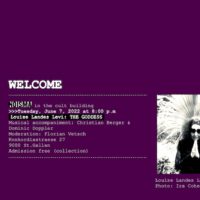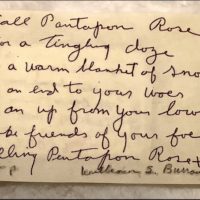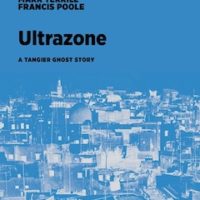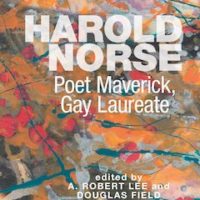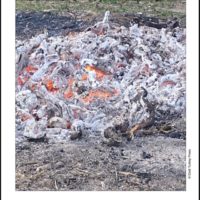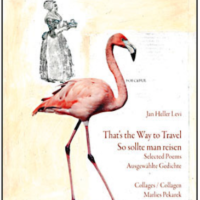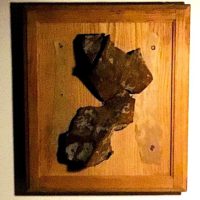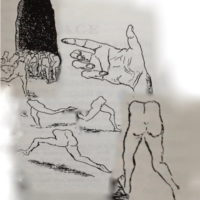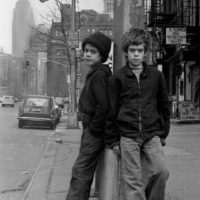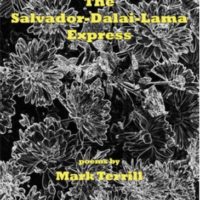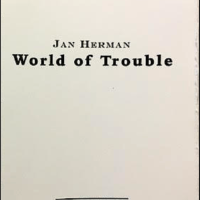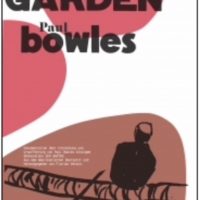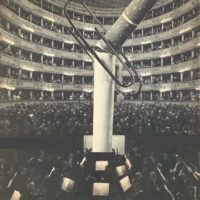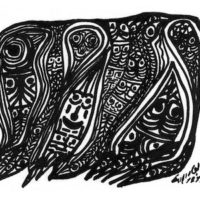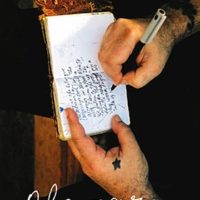UPDATED with videos of the performance. In the heart of St. Gallen, a town not far from Zurich, where Dada began, there is a haven for the outlandish and the curiously extravagant. It is a place for the exchange of ideas and information, passionate discussion, chamber music, and for poetry. The American poet Louise Landes Levi, who is based in Japan, performed there on Tuesday, June 7.
Imagine That!
Late Light Verse: Song Lyrics by William Burroughs
Written in 1995, “Pantapon Rose” refers to an uptown prostitute in Manhattan who sometimes sold the opium alkaloid Pantapon to junkies in need of a fix. Burroughs put her in “Naked Lunch.”
Shooting From the Lip
Having Read Your Email, ‘I will not reply / to yours …’ per Wislawa Szymborska.
Preview: The Many Ghosts of Ultrazone
William Burroughs is not around anymore. He died in 1997. But his ghost definitely is. It has returned to Tangier in “Ultrazone,” a moody yet drole forthcoming novel.
Ben Vautier: ‘What to Do?’
The noted Nice-based Fluxus writer and artist Ben Vautier sends out a message, regularly by email, to friends and others. But the one that came the other day was unusual. Rather than simply conveying news of cultural and artistic events that personally interest him, it was something of a ‘cris de coeur.’
Harold Norse: Poet Maverick, Gay Laureate
‘I’ve sometimes been asked why he wasn’t as famous as Burroughs and Ginsberg, and the other celebrated Beat writers, and I’ve always said he needed a better press agent or a better strategy. Until he was taken up by San Francisco’s radical gay activists, he was strictly a literary man—which was not enough to vault him to fame. His poems, fine as they were, didn’t make headlines.’ — from the Prologue
Slaughterhouse 6
‘The crows scream
and fly to town in whirring flight:
soon it will snow —
happy he who now still has a home!’ …
The world — a gate
to a thousand wastelands dumb and cold!
Whoever has lost
what you have lost, rests nowhere. … — Friedrich Nietzsche
That’s the Way to Travel
Jan Heller Levi & Marlies Pekarek
Thinking of rasPutin, we laughed when a friend joked about the availability of refurbished Geiger counters on Amazon. Gallows humor helps to ease the anxiety of current conditions. Here’s a serious kind of distraction: Moloko Print’s volume of selected poems, ‘That’s the Way to Travel,” by Jan Heller Levi, with illustrations by Marlies Pekarek. (Levi’s first book, “Once I Gazed at You in Wonder,” earned the Walt Whitman Award from the Academy of American Poets.)
‘Dream’ by George Herms
Where does George Herms and his 1985 assemblage “Dream” fit in the continuum of American art? After reading “The Nature of Art” by Armand Marie Leroi and having a look at the Connect Vermeer website, I wondered whether a similar analysis could be done about Herms and “Dream.”
Vlad the Impaler
‘You’re occupiers. You are fascists. Why the fuck did you come here with your guns?’ Ukrainian woman confronting Russian soldiers in Henichesk, in southern Ukraine. ‘Take these seeds and put them in your pocket so, at least, sunflowers will grow on your graves.’ (Translated by Alex Abramovich)
‘Bells ring / silently the evening / rolls in its void’ — Paul Celan
‘Escuela de Corte’ — ‘Last Time We Play Hooky’
A still shot from Rich Allen’s latest movie. If you look at the shoes .. well, the sneakers … you can see these kids were not actors.
‘A Poem for Patriots’ and ‘Upside the Morning’
Two books by Mark Terrill have arrived with ekphrastic poems of great appeal: “The Salvador-Dali-Lama Express” and “Great Balls of Doubt.” Here are two poems with images from daily life and the thoughts they arouse.
World of Trouble
New Folio from Cold Turkey Press
The epigraph (“I’ll do penance with farts and groans / Kneeling on my marrowbones”) comes from a poem by James Joyce. The folio includes four deformed sonnets (“Cursed,” “Her Days All Flee,” “World of Trouble,” “Mirage”) and a poem (“After Carl”).
A Documentation by Florian Vetsch
The Garden by Paul Bowles
Paul Bowles wrote a short story called “The Garden” in 1963. Three years later Joseph McPhillips asked him to dramatize the story for students at the American School of Tangier. Bowles, who was in Thailand at the time and about to leave for Morocco by ship, wrote scenes for the play on his way back and airmailed them to McPhillips, who immediately started rehearsals. Following Bowles’s advice, McPhillips involved artists and writers such as Marguerite McBey, Ira Belline, Brion Gysin, and John Hopkins. The play was staged in Tangier in April 1967, but was never published. This documentation offers the original text of the play (translated as well into German) with an evocative motherlode of illustrations that trace the play’s genesis from page to stage.
Let’s All Say Goodbye to Spotify
The music-streaming service claims that “listening is everything.” But it’s tone deaf. And many agree. As do we.
A Tale by Mohammed Mrabet
As Told to Paul Bowles and Transcribed by Mark Terrill
Mohammed Mrabet, a young Moroccan painter from Tangier, met the American ex-patriate composer and writer Paul Bowles in 1965. Bowles, who lived in Tangier for decades, taped many of Mrabet’s spontaneous stories and translated them into English, eventually resulting in the publication of more than a dozen books. Mark Terrill, himself an American ex-pat writer and poet, recalls that during a kif-fueled visit with the two of them, in 1985, Mrabet began “improvising some of his crazy tales while Paul simultaneously translated for my benefit, and I quickly jotted this one down.” Terrill bought several of Mrabet’s drawings, including the one that illustrates this newly printed poster from Cold Turkey Press.
Four Books That Recently Came Our Way
Poetry by Leia John, by William Cody Maher, by Ira Cohen, and a memoir by Theo Green. Have a look and please don’t take offense at the explicitness of John’s lines.
(Yesterday this blogpost disappeared from the site, inexplicably, so the staff has re-posted it. Apologies to all who clicked on it and were directed to a dead end.)

